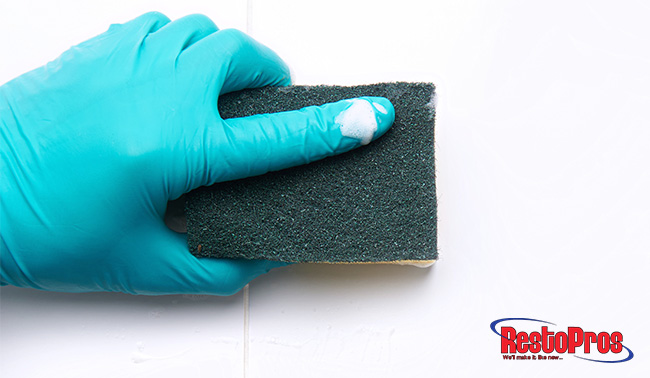
There is a lot of information about mold, its health effects and how you can prevent it – all across the internet. However, since it is the internet, some myths and misconceptions can sneak their way in. Having the right sources and knowledge is integral to becoming a well-informed homeowner. With the right information, you can tackle mold growth safely and confidently. So, to help you figure out which sources and articles can be trusted, the team at RestoPros has developed a list of common misconceptions about mold!
1. Black Mold is Deadly
Black mold has somehow gained a reputation as the deadliest of all mold species. We believe that reputation is a little overhyped. Here are some important facts about black mold that aren’t sensationalized:
- Black mold isn’t a specific type or species of mold. The term black mold is often used to describe molds that produce mycotoxins, which are naturally occurring toxins. One of the species known for producing mycotoxins are Stachybotrys charatarum or Stachybotrys atra—this species, which is greenish-black in color, is often referred to as black mold.
- It is not rare, but it is not as common as other mold species such as Penicillium, Aspergillus and Alternaria.
- The health effects of black mold are dependent on the individual. Adults and children who have weaker immune systems, frequent allergies, and asthma might react to mold exposure and mold spore inhalation.
- Black mold can be prevented just like any other mold species: By avoiding excess moisture and by maintaining cleanliness.
2. You Can DIY Mold Removal
There are several unreliable sources that say you can test and remove mold all by yourself and ultimately save money. While you might be inclined to go on this route, take a moment to reconsider. Mold testing kits aren’t always reliable and there are many states have laws about mold removal. These regulations often require that mold related activities such as assessment and remediation be handled by a licensed professional. In addition, mold often starts growing in porous areas (such as drywall) and it can be hard to remove mold on your own from porous materials. Because of these reasons, it is best to leave mold removal to the experts.
3. Mold is Rare
According to the Center for Disease Control and Prevention, mold is very common in homes and buildings—it can be found in indoor environments if it has the right moisture content and nutrients. So, while you might think mold could never grow in your home, think again. Mold spores are in great quantity all around us and there isn’t anything particularly wrong with that. The problem is when they settle in a specific area in our home and start to grow.
4. No Odor, No Mold
Sure, mold might have a distinct musty smell, but just because you don’t smell any odor doesn’t mean you don’t have a mold problem. While an odor is a sign of mold, it isn’t the only sign of mold. The best way to know whether you have mold or not is to have an inspection done. Experts can perform professional mold testing and discover whether you have a significant mold problem or not.
Contact RestoPros For Mold Removal Services
We hope this list of common misconceptions about mold has been helpful. If you suspect you have a mold problem, get in touch with the experts at RestoPros! We offer services such as water damage restoration, mold testing, removal and remediation! Call us today at 855-587-3786 or schedule a service online!
